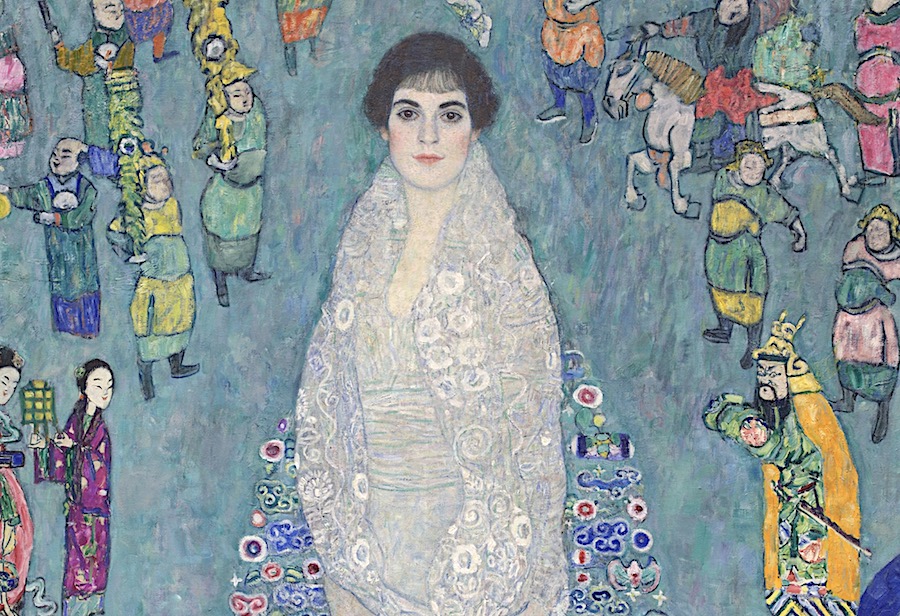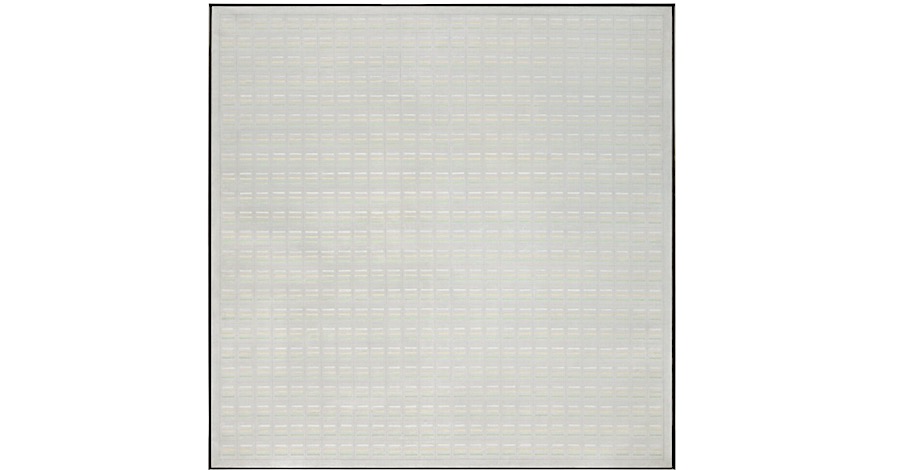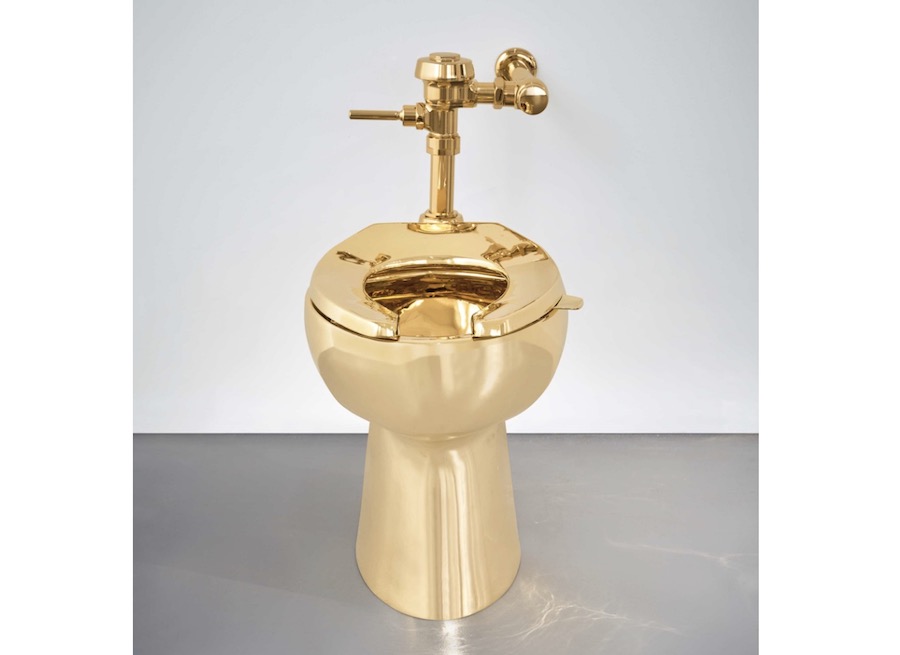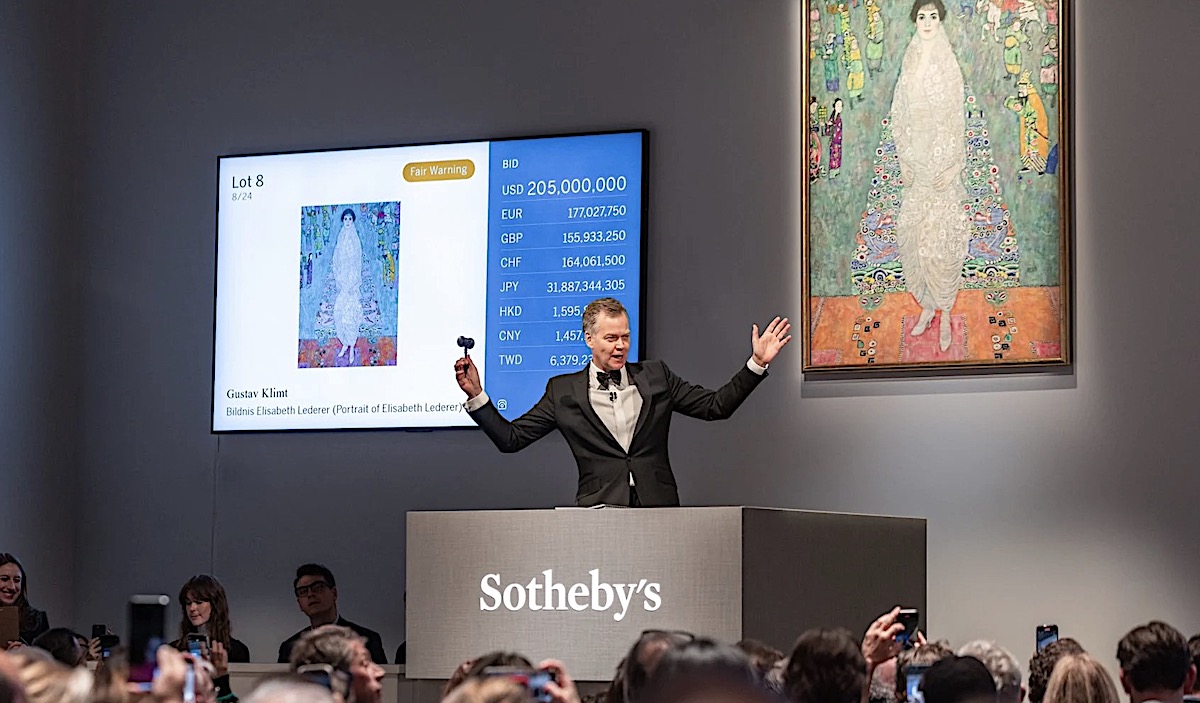Sotheby’s eased into its new headquarters with its first evening sales at the former Whitney Museum, designed by Marcel Breuer. The hulking granite temple on Madison Avenue hauled in $605.1m, or $706m once fees were folded in, on Tuesday night (18 November). That put the result neatly in the middle of expectations, though the figure itself was anything but neat: it was the highest total Sotheby’s has ever racked up in a single night.

The fuel came, as everyone suspected it would, from Leonard Lauder’s collection—a compact but ferocious grouping of 24 works that delivered $456.2m ($527.4m with fees) and achieved the dreaded, coveted “white-glove” status. More than half of that number came from a single monster of a lot: Gustav Klimt’s Bildnis Elisabeth Lederer, making its auction debut and prompting a bidding war so prolonged it became a kind of theatre. When the hammer finally dropped at $205m ($236.3m with fees), the room let out the sort of applause usually reserved for space launches. The painting now sits behind Salvator Mundi as the second-most expensive artwork ever sold at auction.
But the night didn’t warm up to Klimt’s fireworks; it was running hot from the start. The first Calder mobile blew past its estimate, hitting $700,000 ($889,000 with fees) in a few breathless minutes. Another Calder followed, tidier, at $520,000 ($660,400 with fees). A Picasso work on paper, Trois personnages, ticked up to its $800,000 high estimate ($1m with fees)—a genteel, almost sentimental moment, given that Estée Lauder gifted it to her son more than three decades ago.
Momentum built. A Matisse bronze, La Serpentine, crawled upward in the first prolonged back-and-forth of the night before landing at $14.5m ($16.7m with fees), topping expectations. A Munch, Sankthansnatt, held bidders long enough to touch $30m ($35.1m with fees). Then came Klimt’s supporting cast: two studies on paper—$410,000 ($520,700 with fees) and $380,000 ($482,600 with fees)—and the radiant landscape Blumenwiese, which breezed to $75m ($86m with fees). Waldabhang bei Unterach am Attersee followed suit at $61m ($68.3m with fees).

One of the evening’s quietest triumphs wasn’t from Vienna or France but from Agnes Martin. Her 1964 painting The Garden floated up to $14.8m ($17.6m with fees), a new auction record, pulled not by spectacle but by something resembling calm conviction. By the time the Lauder sale closed—45 minutes longer than scheduled—the hammer total had climbed to $456.2m, topping Sotheby’s own guidance and giving the room a rare feeling these days: optimism.
The Now and contemporary sale, pushed late by Lauder’s marathon, shifted tone but stayed lively. Phyllis Kao kept things brisk. Basquiat’s Crowns (Peso Neto) found its footing at $41.5m ($48.3m with fees). Cecily Brown set a new record after a six-way tussle pushed High Society to $8m ($9.8m with fees). Yu Nishimura smashed expectations entirely—ticket climbed to $560,000 ($711,200 with fees), quadrupling its estimate and marking a new high for the artist. Records also fell for Jess, Noah Davis, Antonio Obá, and Robert Alice.

The most hyped lot of the night—and the most whispered about—was Maurizio Cattelan’s America (2016), the notorious 18-karat gold toilet. Expected to flirt with $10m (based solely on gold value), it barely roused the room. One solitary bid, over the phone, carried it to a hammer price of $10m ($12.1m with fees). Sotheby’s later claimed it sold to a “famous American brand,” a statement that raised more eyebrows than clarity. This version of America is the only one still known to exist; the Guggenheim example, famously stolen from Blenheim Palace, is believed to have been melted down.
By the end of the contemporary sale, Sotheby’s added another $148.8m ($178.5m with fees), staying within the presale estimate—though perhaps slightly bruised by two no-sales from big hitters Kerry James Marshall and Barkley Hendricks. Even so, this year’s second half easily outpaced last November’s.
And the week isn’t done. Not even close. Sotheby’s $706m debut in the Breuer comes just a day after Christie’s opened the season with a punchy $574.7m ($690m with fees). On Wednesday (19 November), the circus drifts to Phillips, whose evening sale mixes marquee artists with scientific oddities—including an unexpectedly adorable juvenile triceratops nicknamed “Cera.” Then it’s back to Christie’s for post-war and contemporary works from the estates of Stefan Edlis and Gael Neeson, two collectors who rarely bought light.
Sotheby’s returns again on Thursday (20 November) with a triple-header designed to slam the door on New York’s marquee auctions. Whether the market can sustain this level of theatre for another 48 hours—well, that’s the question hanging in the air.
Top Photo: Courtesy Sotheby’s Insert photos © Sotheby’s

